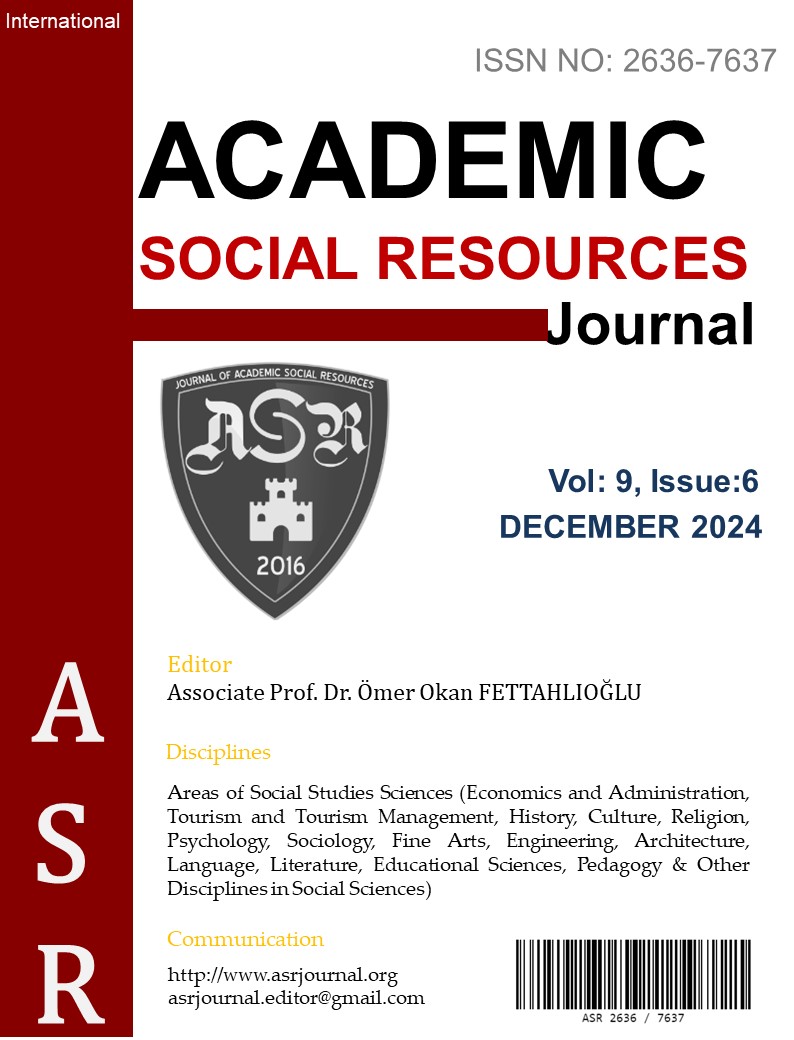Seramik Teknolojisinin Malzeme Olarak Kullanımındaki Dayanıklılık, Sürdürülebilirlik ve Estetik Hali
Author :
Abstract
İnsanoğlunun tarih boyunca sıkça kullandığı malzeme olan seramik; insanların ihtiyaçlarına kayna oluşturarak birçok aracın yapımında ana madde olarak yerini almıştır. Seramik insanoğlunun yaşamını sürdürdüğü her yerde işlevsel ve biçim olarak halen kullanılmaktadır. Bu nedenle uygarlıkların var olduğu toplumda kültürel ve ekonomik olarak gelişimine ışık tutmuştur.Anadolu’da binlerce yıldır varlığını sürdüren seramik Neolitik çağdan Roma ve Bizans’a Selçuklulardan Osmanlıya kadar olan süreçte plastik malzeme olarak elle şekillendirilip seri üretimde ve sanatsal çalışmalarda heyecan uyandıracak boyutlara kendini ulaştırmıştır. Seramiğingünlük kullanımda sadece araç gereç olarak sınırlı kalmayıp plastik özelliğinden faydalanılarak dini ritüel ve ana tanrıça heykellerindede inanç simgesi olarak sanatsal yaratım sürecinde kullanım aracı olmuştur. Yerleşik hayatta yaşamını sürdüren uygarlıkların mimari yapılarda seramiğin süslemelerde kullanıldığı görülmektedir.İnsanın hareketi kontrol etme becerisi ile yaşama yön veren tekerleğin icadı; seramikte çarkı icat etmesine ilham olmuş kilin çarkta kısa zamanda seri üretim olarak seramik sanatını sanayileştirmiştir.Endüstri devrimi ile birlikte yaşanan kontrolsüz üretim ve tüketimde seramik yerini alarak seramik tasarım ve kullanımını geliştirmiştir. Çevre dostu ürünlere yönelen tüketicilerin doğaya duyarlılığı ile estetik, dayanıklılık ve sürdürülebilirlik kavramları giderek daha fazla önem kazanmıştır. Ait olduğu dönem ve uygarlıkların sosyokültürel yaşamına ışık tutan seramik günümüzdede kesintisiz kullanılmaya devam ederek hava, uzay ve raylı sistem araçlarında, fren, buji üretiminde, bilgisayar ve makine üretiminde, elektrik nakil sistemlerinde, elektrik ve elektronik araç gereçlerde,sağlık gereçlerinde, ev araç gereçlerinde kullanılmaktadır. Bu çalışmada seramiğin genel kullanımına değinilerek seramik malzeme hakkında farkındalık oluşturularak dikkat çekici kullanım araçları görsellerle desteklenmiştir.
Keywords
Abstract
Ceramics, which is the material that mankind has used frequently throughout history, has taken its place as the main ingredient in the construction of many tools by creating resources for people's needs. Ceramics are still used functionally and formally wherever human beings live their lives. For this reason, it has shed light on the cultural and economic development of civilizations in the society where they exist.Ceramic, which has existed in Anatolia for thousands of years, has been shaped by hand as a plastic material in the process from the Neolithic era to Rome and Byzantium, from the Seljuks to the Ottoman Empire and has reached dimensions that will arouse excitement in mass production and artistic work. Ceramics are not limited to daily use only as tools, but also as a tool for use in the process of artistic creation as a symbol of faith in religious rituals and mother goddess sculptures by taking advantage of the plastic property. It is observed that civilizations that survived in sedentary life used ceramics in architectural structures for decorations.The invention of the wheel, which directs life with the ability of man to control movement, inspired him to invent the wheel in ceramics, clay industrialized the art of ceramics as a mass production in a short time.It has developed the design and use of ceramics by replacing ceramics in the uncontrolled production and consumption experienced with the industrial revolution. The concepts of aesthetics, durability and sustainability have gained more and more importance with the sensitivity of consumers to nature, who are turning to environmentally friendly products. Ceramic, which sheds light on the sociocultural life of the period and civilizations to which it belongs, continues to be used continuously today and is used in air, space and rail system vehicles, brake, spark plug production, computer and machine production, electrical transportation systems, electrical and electronic tools, sanitary ware, household tools. In this study, by referring to the general use of ceramics, awareness about ceramic material was created and remarkable usage tools were supported with visuals.





